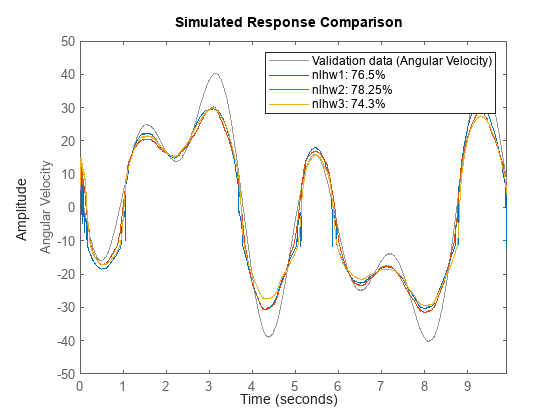Hammerstein-Wiener-Modelle
Verwenden Sie Hammerstein-Wiener-Modelle zur Schätzung statischer Nichtlinearitäten in einem ansonsten linearen System. Sie können die Hammerstein-Wiener-Struktur verwenden, um physische nicht lineare Effekte in Sensoren und Aktoren zu erfassen, die sich auf Eingang und Ausgang eines linearen Systems (wie Totzonen und Sättigung) auswirken. Zur Schätzung von Hammerstein-Wiener-Modellen können Sie die System Identification-App oder die nlhw-Funktion verwenden.
Apps
| System Identification | Identifizieren von Modellen dynamischer Systeme anhand von Messdaten |
Funktionen
Blöcke
Themen
- What Are Hammerstein-Wiener Models?
Understand the structure of Hammerstein-Wiener models.
- Available Nonlinearity Estimators for Hammerstein-Wiener Models
Choose from a set of scalar nonlinearity estimators that you can use for both input and output estimators in Hammerstein-Wiener models.
- Identifying Hammerstein-Wiener Models
Specify the Hammerstein-Wiener model structure, and configure the estimation algorithm.
- Validating Hammerstein-Wiener Models
Plot model nonlinearities, analyze residuals, and simulate model output.
- Using Hammerstein-Wiener Models
Simulate and predict model output, linearize Hammerstein-Wiener models, and import estimated models into the Simulink® software.
- Linear Approximation of Nonlinear Black-Box Models
Choose the approach for computing linear approximations, compute operating points for linearization, and linearize your model.
- How the Software Computes Hammerstein-Wiener Model Output
How the software evaluates the output of nonlinearity estimators and uses this output to compute the model response.

